
The vision for the rebuilding of Mariupol was developed in collaboration with Big City Lab, PUPA, Ro3kvit, Mriia and ZOTOV&CO for Mariupol Reborn. All decisions of the strategy were made based on the results of joint discussions, including with Mariupol residents who now live in other cities of Ukraine.
In 2014, Mariupol had already been liberated from Russian troops, and our team helped to restore and develop it. In 2021, Mariupol received the status of the Cultural Capital of Ukraine. At the same time, the city's development plan until 2035 was drawn up. Mariupol was flourishing. But then the big war broke out.
During the full-scale invasion, Mariupol became a symbol of resistance and strength, but also of pain and loss. In the spring of 2022, Russian troops almost completely destroyed the city, and it has been under occupation since 20 May. But we believe in the liberation of Mariupol and the return home of all its residents who have temporarily lost their homes. We are preparing to rebuild the city.
And what if Mariupol is more than a city? Is Mariupol a reason to return home, love and trust, and create a new life? What will the city look like after de-occupation?
We relied on this idea to create a vision for the restoration of Mariupol.
This project arose from the need for the city municipality, residents, and experts to be prepared for the de-occupation of Mariupol, when quick and effective actions will be needed to restore the city's community, culture, environment and economy.
To create the vision, our team, together with partners PUPA and Critical + Xwhy:
And only then did we start to create a city development concept.
Economy
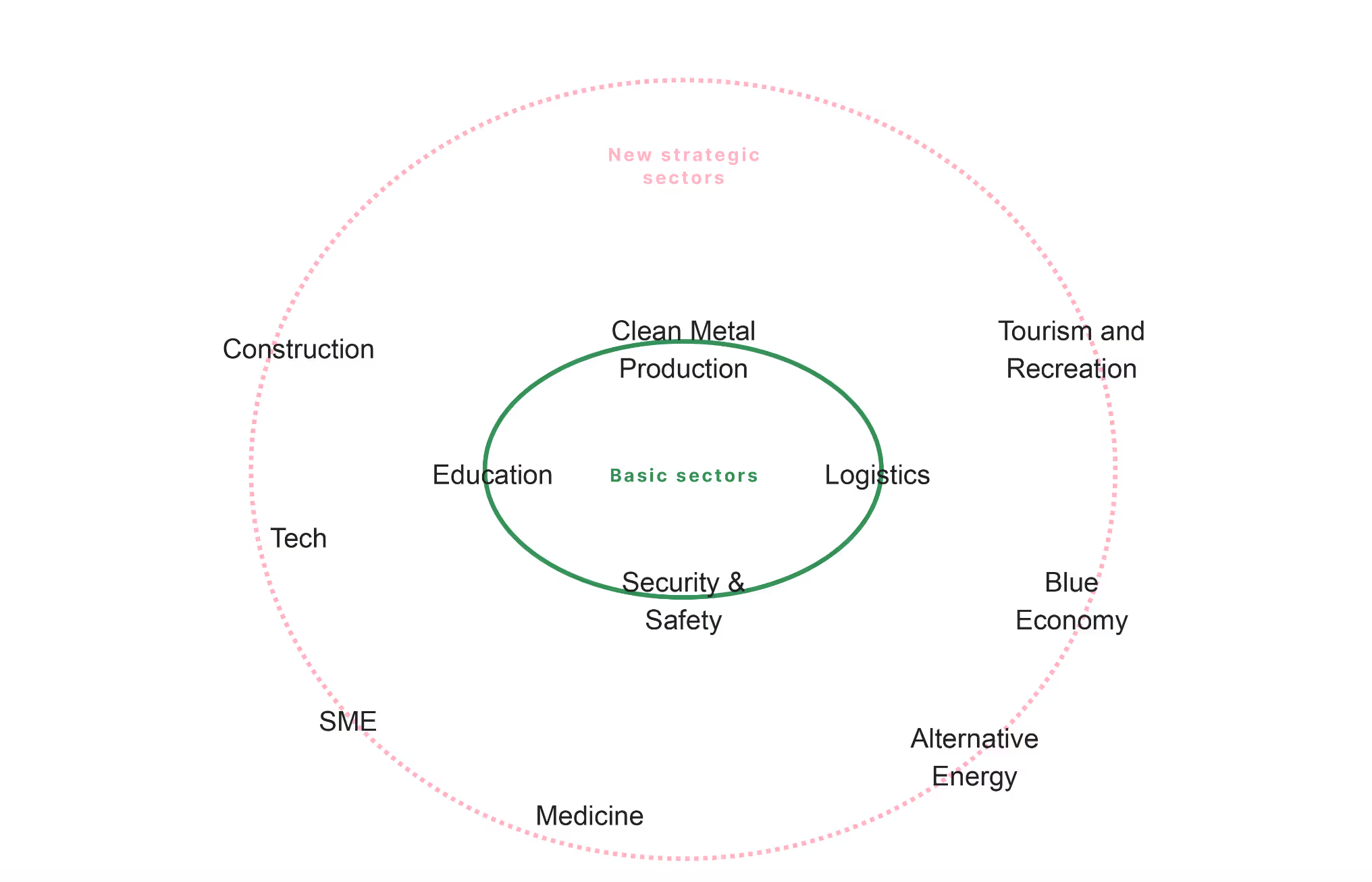
Principles and goals of reconstruction
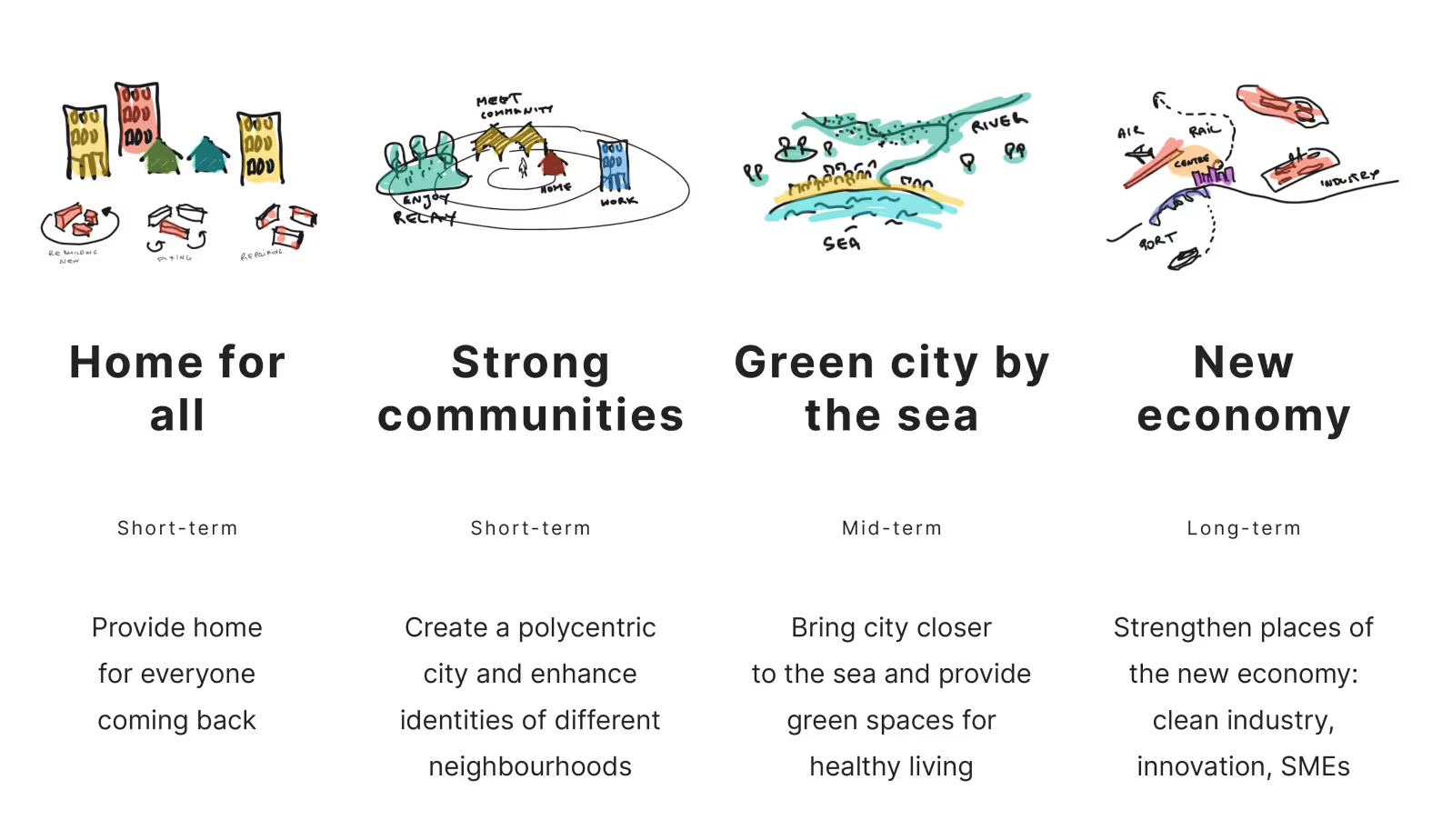
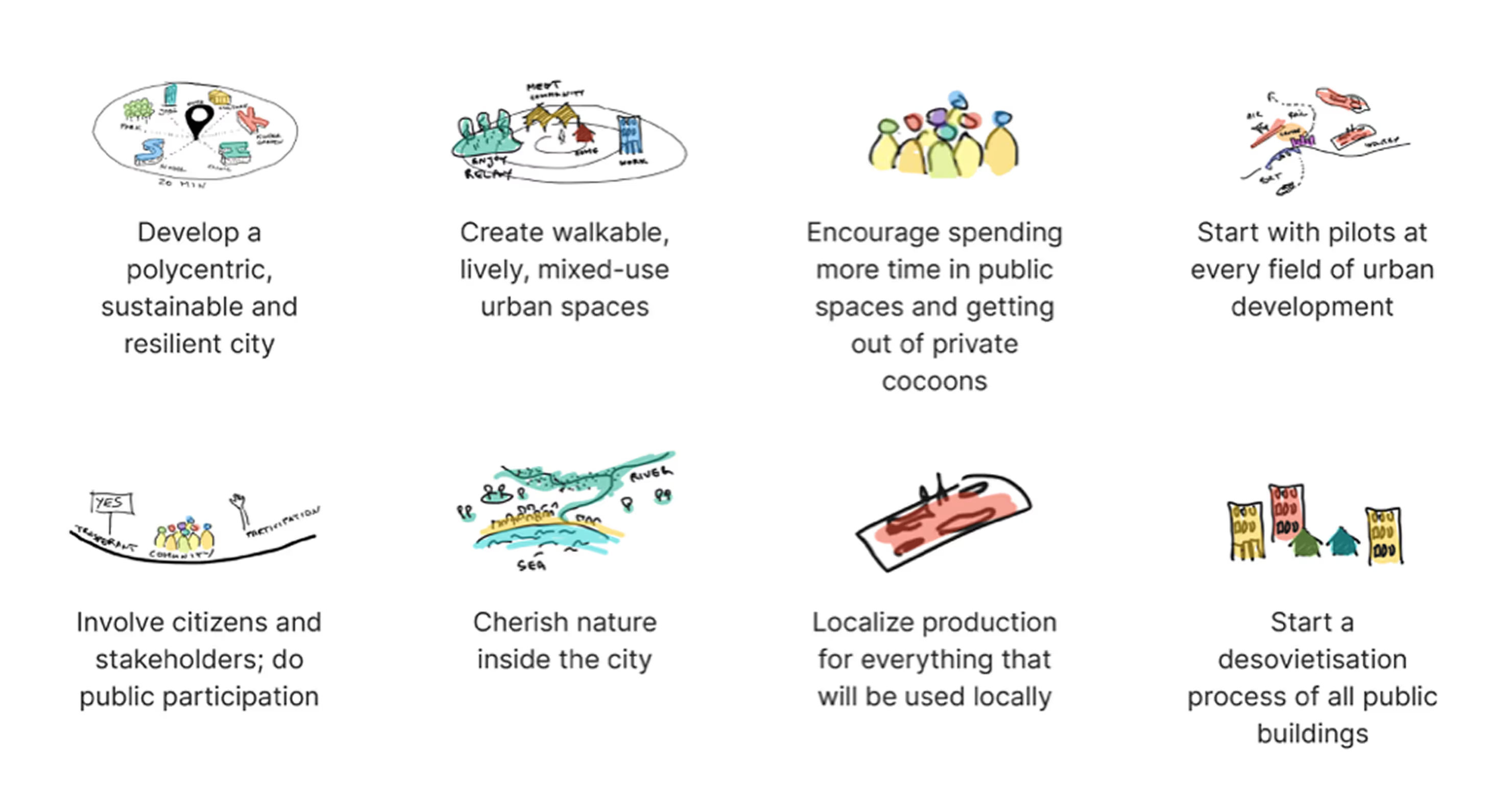
Reconstruction of the city
Short-term goals: to return with pride


Different types of housing
The new buildings could enrich Mariupol's housing stock with various housing types: row houses (connected by a common wall), apartment buildings, and very large or tiny apartments. Different types meet the different needs of Mariupol households: the elderly or people with disabilities, small families or large families, etc.
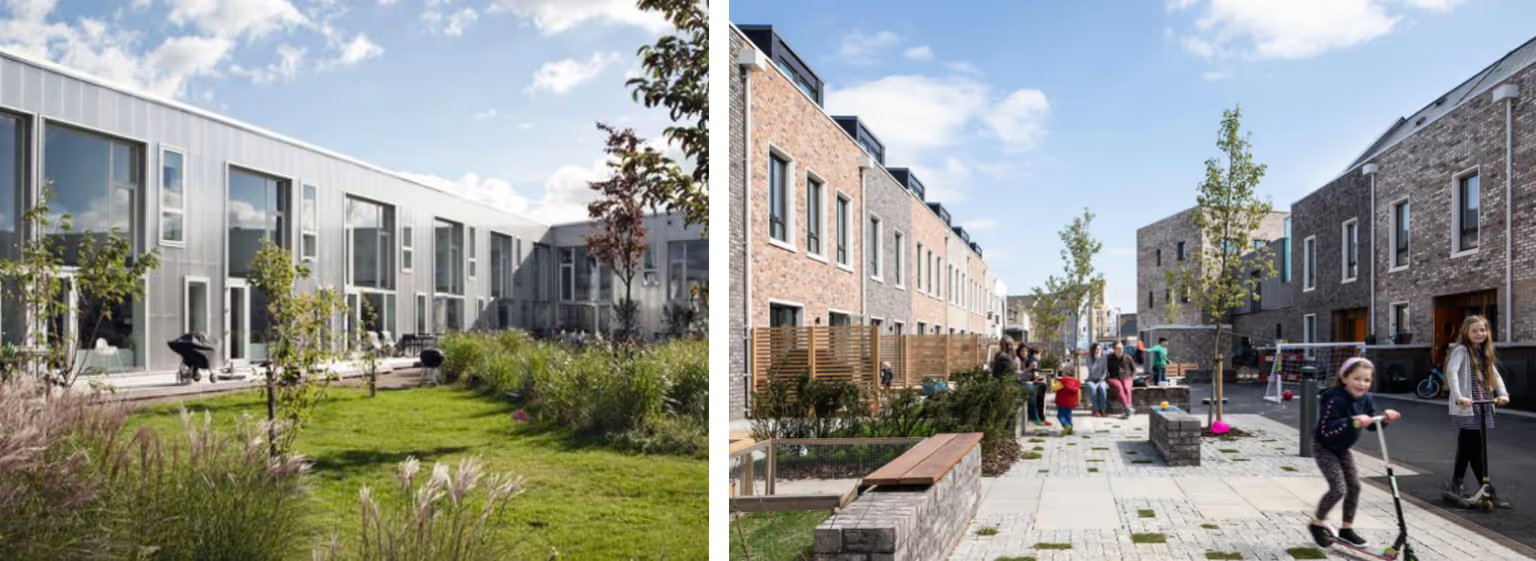
Urban neighbourhoods
New apartment buildings should be located to form neighbourhoods and separate private and public open spaces. Private spaces include courtyards for residents, and public spaces include streets, parks, and squares for all citizens.

Active ground floors
The ground floors of new and renovated buildings should be dedicated to commercial or public functions. Commercial space on the ground floor stimulates the local economy and entrepreneurship. It also provides safety, convenience of living and attractive open space.

Renovation of apartment buildings
Changes can be made to make life more comfortable during the renovation of buildings with minor damage. Increase the windows and thus make the interior brighter; expand the space of apartments with balconies; create attractive, clear and bright entrances; use the 3-metre offset around the buildings for terraces of apartments on the ground floors; create barrier-free structures.

Private sector reconstruction
Establish support programmes to help people rebuild their homes. Create support centres in each district that serve as building materials stores, educational centres on construction, recycling and energy independence.
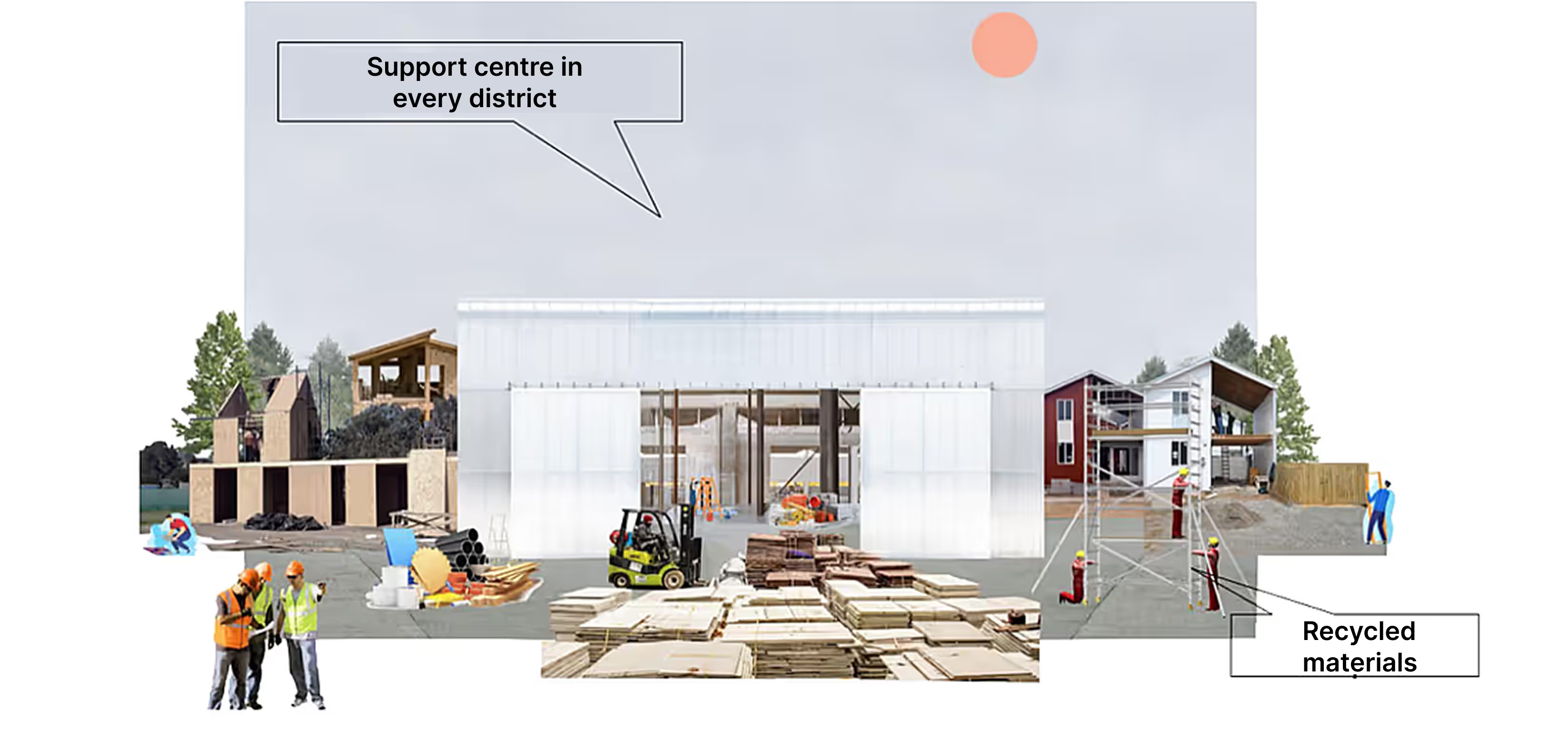


School unites the community
Schools can become significant and key projects in the reconstruction of Mariupol. They can act as community centres in every neighbourhood. The school building can be an example of exceptional, well-recognised and appreciated architecture.

The schoolyard as the heart of the neighbourhood
Outdoor school spaces can become meeting and recreational places for the whole community.

Universities as centres of youth attraction and economic growth
One of the ways to bring young people back to the city is not to create a ‘city within a city’ campus. We propose to integrate university buildings and dormitories into the fabric of the city, so that students become part of it and enrich the culture and vibrancy of Mariupol.

Libraries as social centres
Libraries can act as social places, especially for the elderly, teenagers, and parents with children. Citizens can meet, play, study, and hold extracurricular activities there. Architecturally, a library can be an important and recognisable building. But – most importantly – it should be easy to use and access: barrier-free entrance, light, facilities for caring for those who need it, and a welcoming atmosphere.



There are several approaches to the reconstruction of damaged historic buildings in the city centre:

The decision on which approach to take and where to do it should be made after involving citizens and experts from different sectors.
It is emotionally challenging to live in a city where tragedies have been around every corner. That is why we propose not to blur the places of memory around the city, but to allocate specific landmarks for them.
Memorial as a monument of architecture and design

Memorial as a landscape park

Medium-term goals: rebuilding with care
Developing a network of blue and green infrastructure and integrating them into the urban environment through sustainable mobile solutions can create a more comfortable, happier and healthier city.
The Azov Sea has always been an important symbol of Mariupol. Realising the waterfront's potential will lead to a better quality of life and new development opportunities.




Key components of an active lifestyle include access to sports areas, a network of public sports clubs and a team of coaches, public events and competitions for amateurs.
We propose to create safe and accessible places for physical activity: city parks, swimming pools, trails, bicycle paths and outdoor sports grounds in schools.

Creating post-industrial facilities through landscape design and urbanism is a global approach that Mariupol could follow.
Mariupol is an industrial city with a large number of plants and factories. However, some of them will not be used after the city's reconstruction. Since factories are an integral part of the cityscape, we propose to use them for post-industrial landscape parks.

We suggest creating new main streets in Mariupol with wide sidewalks, bicycle lanes, and green boulevards, making them safe and pleasant for all users. The ground floors of the surrounding buildings could be used for commercial activities.
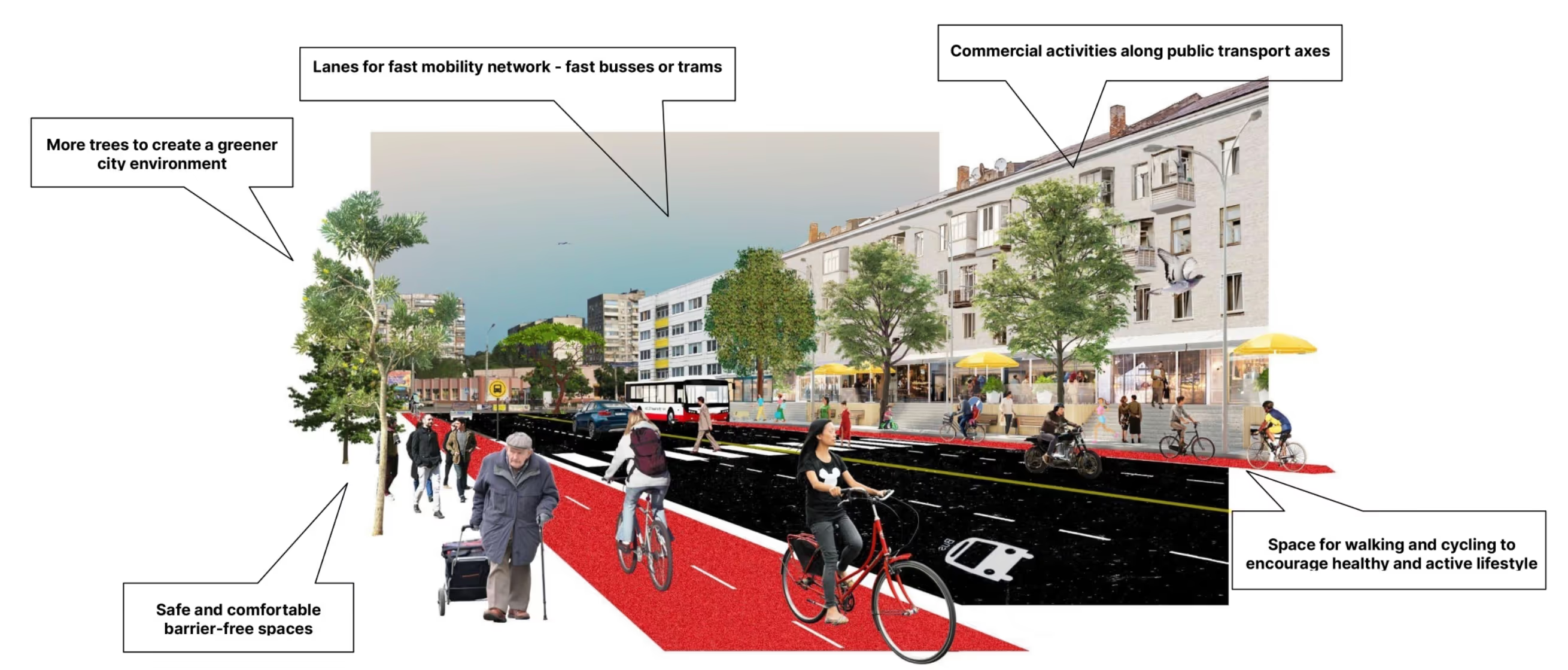
Long-term goals: to manage with inspiration
New areas for the location of new economy zones: knowledge clusters, clean production zones, special economy, logistics hubs. This will allow these areas to be developed as model urban areas with the necessary characteristics:

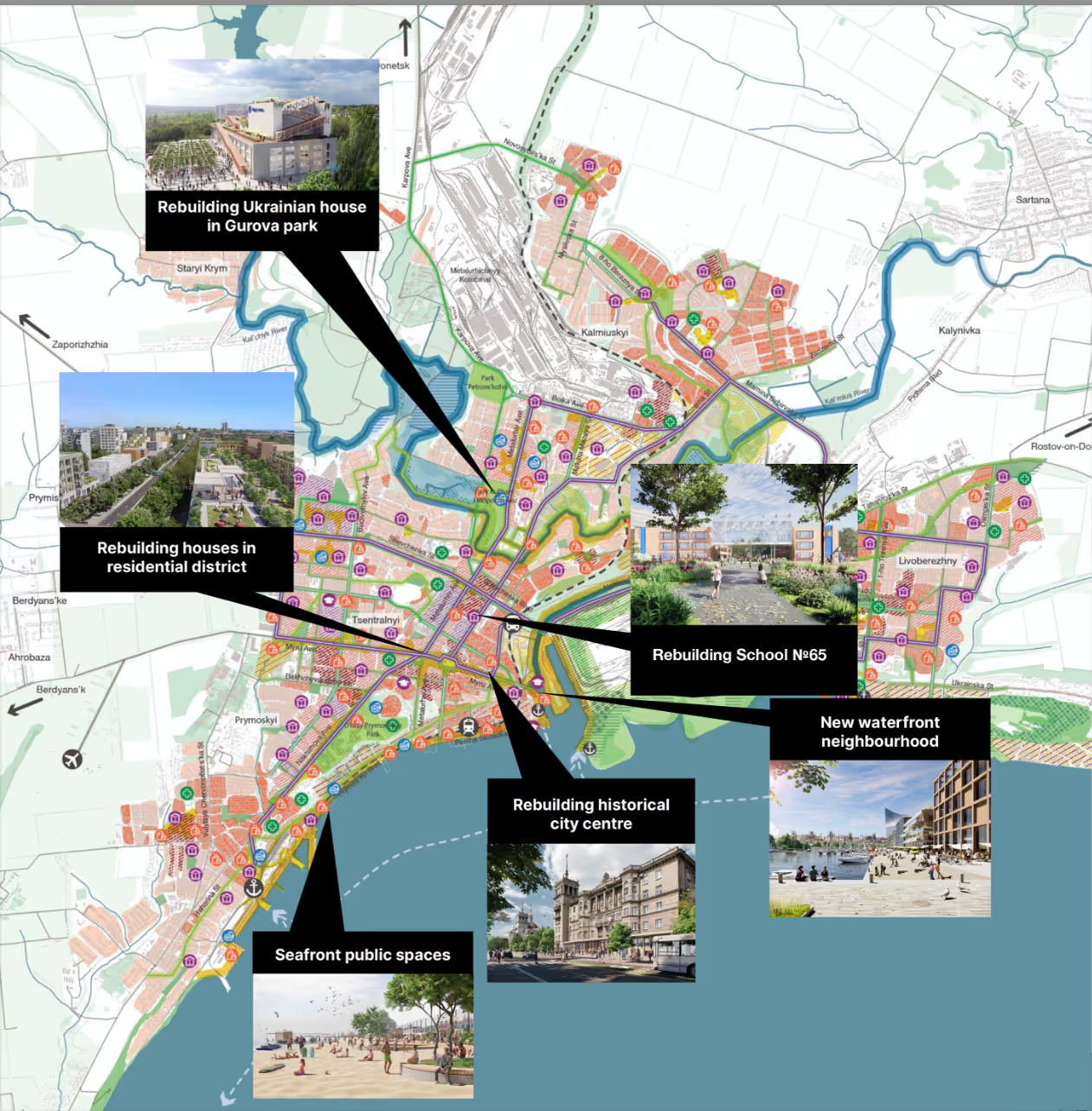
Team and experts

Tadas Jonauskis - co-founder of the urban studio PUPA
Justina Muliuonyte - co-founder of the urban studio PUPA
Ruta Slavinskaite - urbanist, project manager at Create Lithuania
Mariana Maksymiv - project manager at Create Lithuania
Lukas Kulikauskas - architect and urbanist at PUPA urban studio
Maks Yakover - founder of the Big City Lab urban bureau
Viktoria Titova - CEO of Big City Lab urban bureau
Ksenia Sukhova - Secretary of the Mariupol City Council
Serhiy Orlov - Deputy Head of Mariupol City Council
Serhiy Zakharov - Deputy Chairman of Mariupol City Council
Denys Kochubey - Mariupol City Council
Natalia Yemchenko - Communications Director at SCM
Oleksandr Vyshniakov - Director of Mariupol Reborn NGO
Tetiana Lomakina - Advisor to the Presidential Commissioner for Accessibility
Uliana Tokareva - Deputy Minister of Social Policy of Ukraine
Remigijus Šimasus - Mayor of Vilnius
Kyrylo Kryvolap - Advisor to the Prime Minister of Ukraine, co-founder and CEO of the Centre for Economic Recovery
Dmytro Livch - co-founder of the Centre for Economic Recovery
Jonas Liugaila - Head of Design Strategy at Critical+Xwhy, a research and design agency
Dominykas Karpovic - Head of Innovation at the research and design agency Critical+Xwhy
Deividas Juozulynas - service design expert at the research and design agency Critical+Xwhy
Algirdas Orantas - member of the Lithuanian Graphic Design Association, member of the Lithuanian Design Council, CEO of the research and design agency Critical+Xwhy
Volodymyr Vorobey - managing director at PPV Knowledge network
Iryna Magdysh - cultural activist, Head of the Department of Culture at Lviv City Council, 2014-2015
Dr Zigmas Vitkus - historian, researcher of historical memory, researcher at the Institute of History and Archaeology of the Baltic Region, Klaipeda University
Dr. Paulina Budryte - lecturer and researcher at Kaunas University of Technology, expert in environmental engineering technologies, specialising in urban planning and water management
Augustina Posiunaite - junior architect at the architectural and urban office of Do Architects
Emilija Martinkevic - architect at Do Architects architectural and urban office
Gilma Teodora Gylyte - co-founder of the architectural and urban office Do Architects
Algimantas Neniskis - chief architect and co-founder of Do Architects architectural and urban office
Auguste Klimanskyte - expert of the urban studio PUPA
Jurate Volkaviciute - architect of the urban studio PUPA